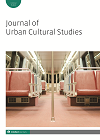
Full text loading...

There is a strong connection between cities and literature; they inhabit and shape each other. Sociologists have studied the relationship between them, looking at how literary meaning is developed and how it shapes urban and social milieus. While there is a large body of poetry-based research, newspaper poetry remains largely unexplored in the United States. Drawing on discourse and content analysis of a new and never-used set of poems published in Milwaukee’s two major alternative newspapers between 1967 and 1973, this article analyses poetic representations of Milwaukee’s social, institutional and urban dimensions. Additionally, it examines variability and continuity in the focus of these poems, as well as the factors that might shape these patterns. The results show multiple technical and rhetoric mechanisms used by poets when representing that historical period poetically and reveal that even in periods of intense social upheaval, ‘love’ and ‘death’ appear to be the primary themes in which poets focus on. This article also devotes particular attention to the relationship between poetry and the urban space, and the implications of platforms of distribution and consumption in poetic representations of cities’ historical periods and change building on literature on the connections between local environment and cultural production.

Article metrics loading...

Full text loading...
References


Data & Media loading...

Publication Date:
https://doi.org/10.1386/jucs_00073_1 Published content will be available immediately after check-out or when it is released in case of a pre-order. Please make sure to be logged in to see all available purchase options.